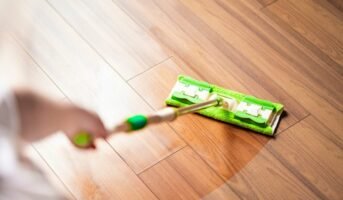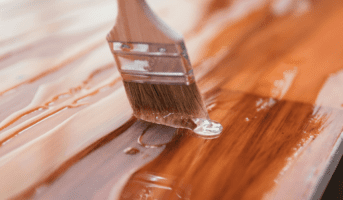Installing house numbers is a simple yet essential task that not only makes it easier for visitors, delivery people and emergency services to find your home but also adds a touch of personality to your house’s exterior. Whether you’re replacing old numbers or installing new ones, this straightforward guide will help you get the job done quickly and correctly.
See also: How to fit a seat in a small toilet?
Materials needed
- House numbers
- Drill
- Screwdriver
- Screws or nails (usually provided with the numbers)
- Level
- Tape measure
- Pencil
Step 1: Choose your numbers
Start by selecting the style and size of numbers that best fit the exterior of your home. Consider the colour, font and material that will stand out against your house’s background while complementing its overall style.
Step 2: Determine the location
Choose a spot that is easily visible from the road. Typically, house numbers are installed near the front door or on a mailbox post. Ensure the location is not obstructed by trees, bushes or decorations.
Step 3: Measure and mark
Using your tape measure, decide on the exact position of the numbers. Measure the space to keep the numbers centered and aligned. Use a pencil to lightly mark where each number will go. Make sure to leave enough space between numbers to avoid a cluttered look.
Step 4: Check alignment
Place a level against the marks to ensure they are even and straight. Adjust the markings if necessary. It’s important that the numbers are aligned to appear neat and professional.
Step 5: Drill holes
If your numbers need to be screwed in, use a drill to make holes where you marked. Be careful to choose a drill bit that matches the size of the screws you are using. This will prevent the surface from cracking or splitting.
Step 6: Install the numbers
Align the numbers over your marks and holes. Screw or nail them in place, tightening them enough to secure them but not so tight that they damage the numbers or the surface. If your numbers come with spacers to keep them from sitting flush against the wall, use them as directed.
Step 7: Final check
Step back and look at the numbers from the street to ensure they are straight and clearly visible. Make any necessary adjustments.
FAQs
What are the best materials for house numbers?
House numbers come in various materials including metal (such as brass, aluminium and stainless steel), plastic and wood. Metal numbers are durable and offer a classic look, while plastic numbers are lightweight and often more budget-friendly. The best material depends on your climate and the style of your home.
How high should house numbers be installed?
House numbers should be installed at a height where they are easily visible from the street. Typically, this is about 4 to 5 feet above the ground. Ensure they are not obscured by any landscaping or decorations.
Can house numbers be installed on any surface?
House numbers can be installed on a variety of surfaces including wood, brick, stucco and siding. The installation process might vary slightly depending on the surface, particularly in the type of screws and drill bits used.
What tools are required to install house numbers?
You will typically need a drill, screwdriver, screws or nails, level, tape measure and pencil. These tools will help you measure, align and securely attach your house numbers.
How do I ensure my house numbers are aligned properly?
Use a level to check the alignment of the numbers after marking their position with a pencil. Make adjustments to the marks before drilling holes to ensure that the numbers will appear straight once installed.
Is it necessary to use a drill for installing house numbers?
While a drill is recommended for most installations, especially for hard surfaces like brick or stucco, adhesive-backed numbers can be used on smooth surfaces and do not require drilling.
What should I do if my house numbers come with spacers?
Use the spacers as instructed to keep the numbers from sitting flush against the wall. This can prevent moisture accumulation and enhance the aesthetic appeal by creating a shadow effect.
How can I make my house numbers more visible at night?
Consider choosing reflective materials or installing a small spotlight above or below the numbers. Alternatively, backlit house numbers are also an excellent option for enhanced visibility at night.
What should I do if the surface cracks during installation?
If the surface cracks slightly, you can fill the cracks with caulk or a similar filler. To prevent cracking, ensure you use the correct drill bit size and do not overtighten the screws.
| Got any questions or point of view on our article? We would love to hear from you. Write to our Editor-in-Chief Jhumur Ghosh at jhumur.ghosh1@housing.com |

Khushi Jha, a graduate in history and political science from the University of Delhi, doesn’t restrict herself to a single domain. Her passion for writing has led her to explore a wide spectrum of topics, ranging from fashion, health and lifestyle to technology, real estate and finance. She has written for platforms like TheVoiceOfWoman, Techsunk, Fitmist and Menskool, among others. When free, she enjoys reading books, including fiction, history and geopolitics.












